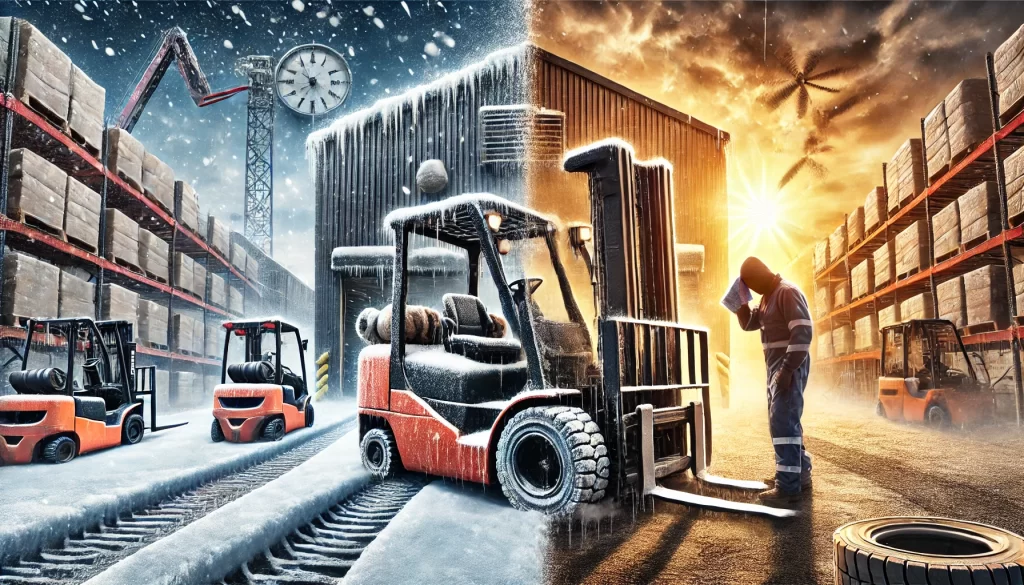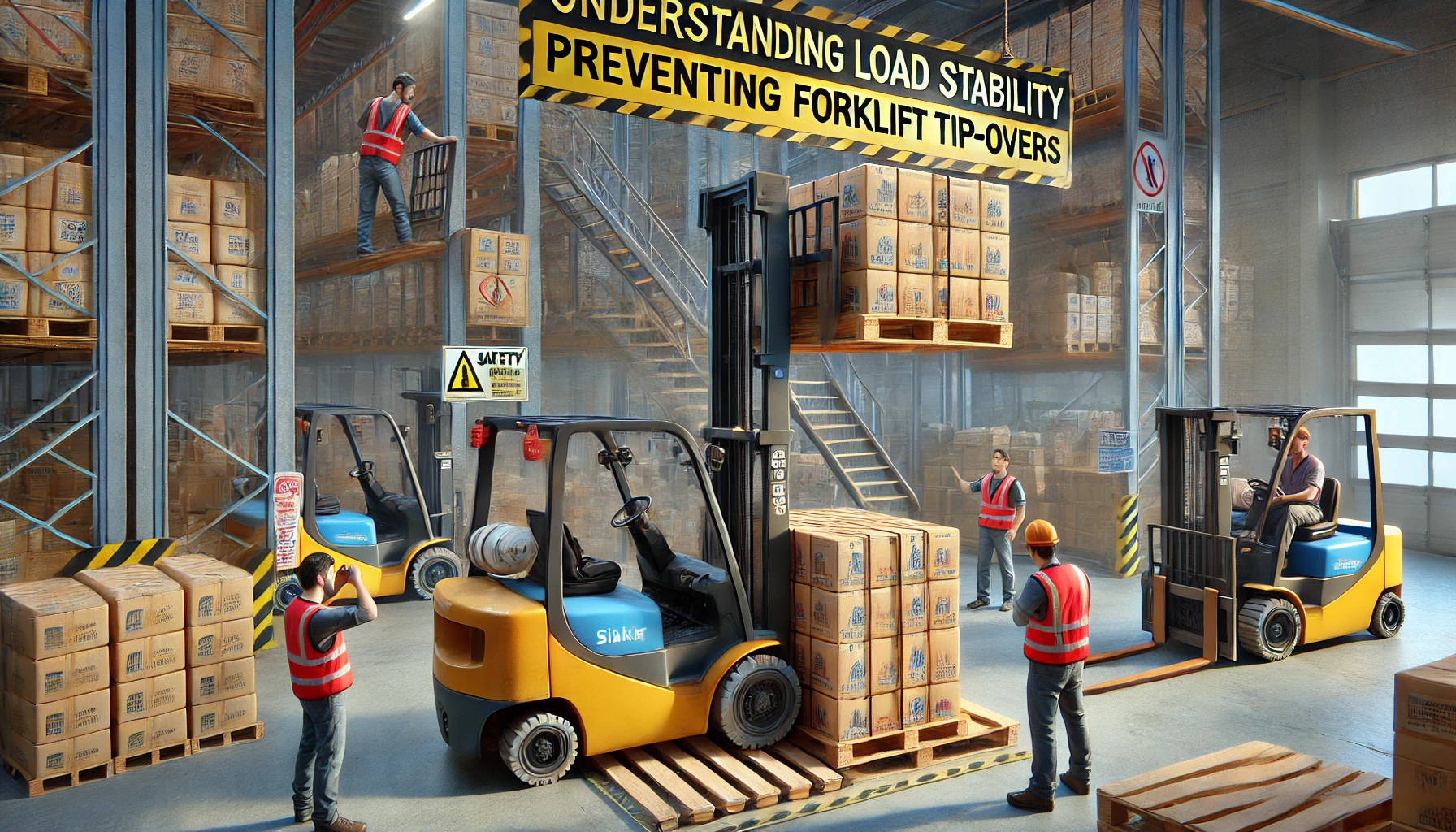How Seasonal Changes Affect Forklift Performance (and What to Do About It)
Forklifts are the backbone of many industries, from warehouses and construction sites to shipping yards. While they’re designed for heavy-duty tasks, seasonal changes—especially in Australia—can significantly affect forklift performance and safety. Whether you’re dealing with scorching summer heat, icy winter conditions, or wet, slippery environments, understanding how seasonal changes impact your forklift is key to maintaining efficiency and reducing risks.
1. The Impact of Hot Summers on Forklifts
Australia’s summers can be brutally hot, and these extreme temperatures can strain both your forklift and its operator.
How Heat Affects Forklifts:
- Overheating Engines: High ambient temperatures can cause engines to overheat, reducing efficiency and potentially leading to breakdowns.
- Battery Drain: For electric forklifts, heat accelerates battery fluid evaporation, reducing battery life and performance.
- Tyre Pressure Fluctuations: Heat causes air in pneumatic tyres to expand, increasing the risk of blowouts or uneven wear.
- Hydraulic System Stress: Hydraulic fluid can thin out in high temperatures, affecting lifting capacity and control.
What to Do About It:
- Regular Coolant Checks: Ensure cooling systems are topped up and free from blockages.
- Battery Maintenance: Keep batteries clean, check fluid levels regularly, and avoid overcharging.
- Tyre Inspections: Monitor tyre pressure frequently and adjust as needed.
- Shade and Ventilation: Store forklifts in shaded areas and improve ventilation in indoor workspaces.
2. The Effects of Cold Winters on Forklift Performance
While Australian winters aren’t as harsh as in some parts of the world, colder regions still experience freezing temperatures that can affect forklift functionality.
How Cold Affects Forklifts:
- Battery Efficiency Drops: Cold weather reduces battery capacity, leading to shorter operating times.
- Thickened Fluids: Hydraulic oils and lubricants become thicker, reducing efficiency and slowing down mechanical parts.
- Brittle Components: Plastic and rubber parts (like hoses and seals) can become brittle, increasing the risk of cracks and leaks.
- Reduced Tyre Traction: Cold surfaces can be slippery, especially with frost or ice, reducing traction and stability.
What to Do About It:
- Winter-Grade Fluids: Use hydraulic oils and lubricants designed for cold weather to maintain fluidity.
- Battery Warmers: Consider battery warmers or insulated covers to maintain optimal battery performance.
- Pre-Operation Warm-Ups: Let the forklift idle for a few minutes before use to warm up internal fluids.
- Traction Aids: Use chains or anti-slip mats in icy or frosty environments.
3. Navigating Wet and Humid Conditions
Rainy seasons and high humidity pose their own set of challenges, affecting both outdoor and indoor forklift operations.
How Wet Conditions Affect Forklifts:
- Slippery Surfaces: Wet floors reduce traction, increasing the risk of skidding and tip-overs.
- Electrical System Risks: For electric forklifts, moisture can seep into electrical components, causing malfunctions or short circuits.
- Corrosion and Rust: Prolonged exposure to moisture accelerates rust on metal components, compromising structural integrity.
- Brake Performance: Water can reduce the effectiveness of brakes, increasing stopping distances.
What to Do About It:
- Improve Floor Drainage: Ensure proper drainage in work areas to prevent standing water.
- Waterproofing: Apply protective coatings to metal parts and ensure electrical components are properly sealed.
- Anti-Slip Measures: Install anti-slip mats and use tyres designed for wet conditions.
- Regular Inspections: Check brakes, electrical systems, and exposed metal parts frequently for signs of wear or corrosion.
4. General Seasonal Maintenance Tips
Regardless of the season, proactive maintenance is the key to forklift safety and longevity.
- Scheduled Servicing: Increase the frequency of maintenance checks during extreme weather conditions.
- Operator Training: Train operators to recognise seasonal risks, such as reduced visibility during foggy mornings or slippery ramps after rain.
- Fluid Monitoring: Regularly check and replace engine oil, hydraulic fluid, and coolant as needed.
- Keep It Clean: Dirt, mud, and debris can build up faster in wet or dusty seasons, affecting forklift performance.
Final Thoughts
Seasonal changes may be inevitable, but forklift-related accidents and breakdowns don’t have to be. By understanding how different weather conditions affect forklift performance and implementing the right maintenance and safety practices, you can keep your operations running smoothly all year round.
Stay ahead of the seasons, and your forklift will thank you with reliable, safe performance—rain, shine, or snow.







